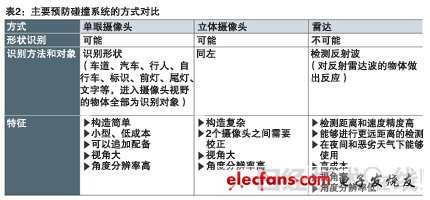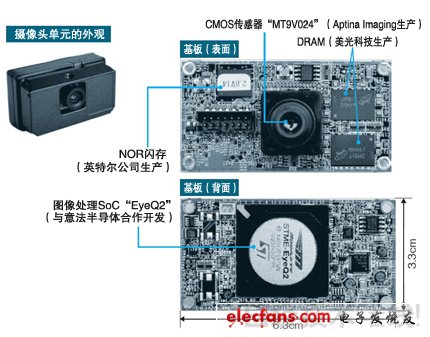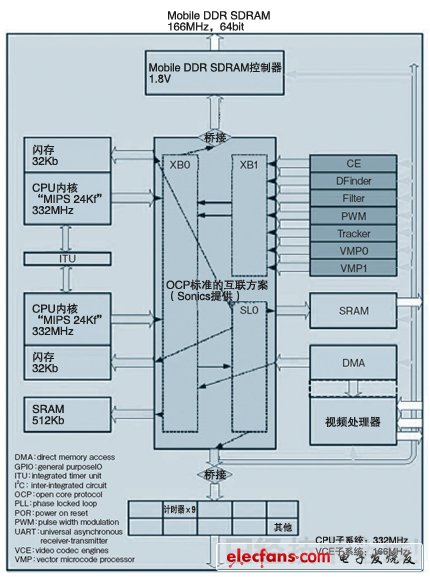Suitable for small size and low cost
The method of implementing the anti-collision alarm system is not the only one-eye camera method we use (Table 2). Most of the previous anti-collision warning systems used millimeter-wave radar and lidar, but such systems need to be integrated with vehicles and have limited installation models. In terms of price, millimeter-wave radar is even more expensive.

The way to use the camera is also the stereo camera method used by Fuji Heavy Industries for EyeSight. Compared with the millimeter-wave radar method, the advantage of this method is that it can reduce the cost of the system, and can also develop automotive rear-mounted products.
Since our company was founded in 1999, we have been devoted to the development of a monocular camera method, the purpose is to achieve miniaturization, low cost and system simplicity. Compared with the method of using a stereo camera, the detectable distance is shorter, but we believe that the gap can be narrowed by improving the image processing technology. This is the most important project to form a difference with other companies, and it is also the core technology that we have worked hard to develop.
System simplification is an indispensable element when introducing products to the auto parts market. In order to improve the detection performance, the anti-collision system using the camera must input and correct the camera position during installation. The stereo camera must carefully adjust the distance and installation angle between the two cameras. If you reduce the number of cameras to one, you can reduce the time and labor required for calibration.
Improved hardware, using black and white camera elements
C2-270 is composed of camera unit, display device and cable box. The cable box uses CAN bus to read signals from vehicles such as speed, brakes, wipers, direction indicators and high beams.
In addition to the camera unit and camera element, the C2-270 also has a core part-the image processing SoC (Figure 4). The equipped CMOS image sensor adopts "MT9V024" with resolution of VGA (640 & TImes; 480 pixels) produced by American ApTInaImaging company. CMOS is 1/3 inch and the pixel pitch is 6.0μm. The angle of view is 38 degrees horizontal & 30 degrees vertical. The focal length (f) of the lens is 5.7mm, and the aperture is F = 1.6.

Figure 4: Simple components
The "C2-270" camera unit has a small number of components, and the image processing SoC "EyeQ2" occupies a large installation area.
The CMOS image sensor used is a black-and-white product, which can detect light equivalent to the full moon night and the brightness is below 0.1lx. Our self-developed exposure adjustment technology can optimally control the exposure of each scene. This is because the optimal exposure values ​​when identifying lane lines, vehicles, and signs vary.
In addition, the C2-270 has made other improvements, which can divide the sensitivity into 3 stages and shoot in groups of 3 frames. In a dark environment, first increase the sensitivity to capture light in the distance, then gradually reduce the sensitivity to capture light at very close distances. Although the shooting speed of the camera itself is 60 frames per second, it is processed at a rate of about 15 frames per second during processing.
Can process seven tasks in parallel
Image processing SoC-EyeQ2 is equipped with two 32-bit CPU cores "MIPS 24Kf" of MIPS Technologies (Figure 5). The working frequency of the CPU is 332MHz, and it is also equipped with 8 64bit codec engines (VCE: video codec engines) for image processing, and can simultaneously process seven tasks.

Figure 5: Equipped with two CPU cores
Schematic diagram of the image processing SoC "EyeQ2". The CPU core adopts "MIPS 24Kf" which supports multi-thread function.
With the power on, the C2-270's camera will always monitor the field of vision ahead, while continuously identifying vehicles, pedestrians, and lane lines that enter the field of vision. Therefore, an image processing SoC with high-speed processing performance is essential. At the beginning of development, we used a general-purpose image processor produced by a large semiconductor manufacturer, but the lack of processing performance quickly manifested itself. Therefore, we changed the system that only developed software in the past, and began to develop hardware, that is, an image processor dedicated to collision prevention systems.
Application fields of solar panels:
1. User solar power supply: (1) Small power supply ranging from 10-100W, which is used for military and civilian life in remote areas without electricity, such as plateaus, islands, pastoral areas, frontier posts, etc., such as lighting, TV, tape recorders, etc.; (2) 3 - 5KW home roof grid-connected power generation system; (3) Photovoltaic water pump: solve deep water well drinking and irrigation in areas without electricity.
2. Transportation field: such as navigation lights, traffic/railway signal lights, traffic warning/sign lights, Yuxiang street lights, high-altitude obstruction lights, highway/railway wireless telephone booths, unattended road shift power supply, etc.
3. Communication/communication field: solar unattended microwave relay station, optical cable maintenance station, broadcast/communication/paging power system; rural carrier telephone photovoltaic system, small communication machine, GPS power supply for soldiers, etc.
4. Petroleum, marine, and meteorological fields: cathodic protection solar power systems for oil pipelines and reservoir gates, domestic and emergency power supplies for oil drilling platforms, marine testing equipment, meteorological/hydrological observation equipment, etc.
5. Lamp power supply: such as garden lamps, street lamps, portable lamps, camping lamps, mountaineering lamps, fishing lamps, black light lamps, rubber tapping lamps, energy-saving lamps, etc.
6. Photovoltaic power station: 10KW-50MW independent photovoltaic power station, wind-solar (firewood) complementary power station, various large parking plant charging stations, etc.
7. Solar buildings: Combining solar power generation with building materials will enable large buildings in the future to achieve self-sufficiency in electricity, which is a major development direction in the future.
8. Other fields include (1) Supporting cars: solar cars/electric cars, battery charging equipment, car air conditioners, ventilation fans, cold drink boxes, etc.; (2) Solar hydrogen production plus fuel cell regenerative power generation system; (3) Sea water Power supply for desalination equipment; (4) Satellites, spacecraft, space solar power plants, etc.
photovoltaic solar panels, solar panel system, mono perc solar panel, bifacial solar panels,commercial solar panels
Ningbo Autrends International Trade Co., Ltd. , https://www.aitsolarpanels.com